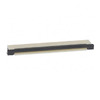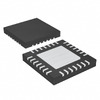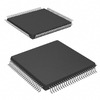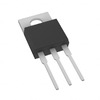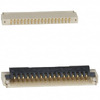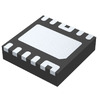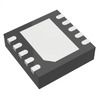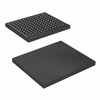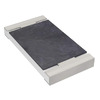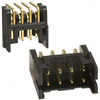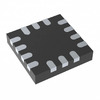Everything You Need to Know About the LM2575 Voltage Regulator
The LM2575 series is a widely used step-down voltage regulator known for its efficiency and versatility. It simplifies circuit design with minimal external components, making it a popular choice in various applications such as consumer electronics, automotive systems, and industrial equipment. This article will explore the LM2575 series, including its key features, pin configuration, operational overview, and practical uses. Additionally, we will delve into the manufacturer's background, test circuit guidelines, and common questions related to its application, helping readers better understand how to use this regulator effectively.Catalog
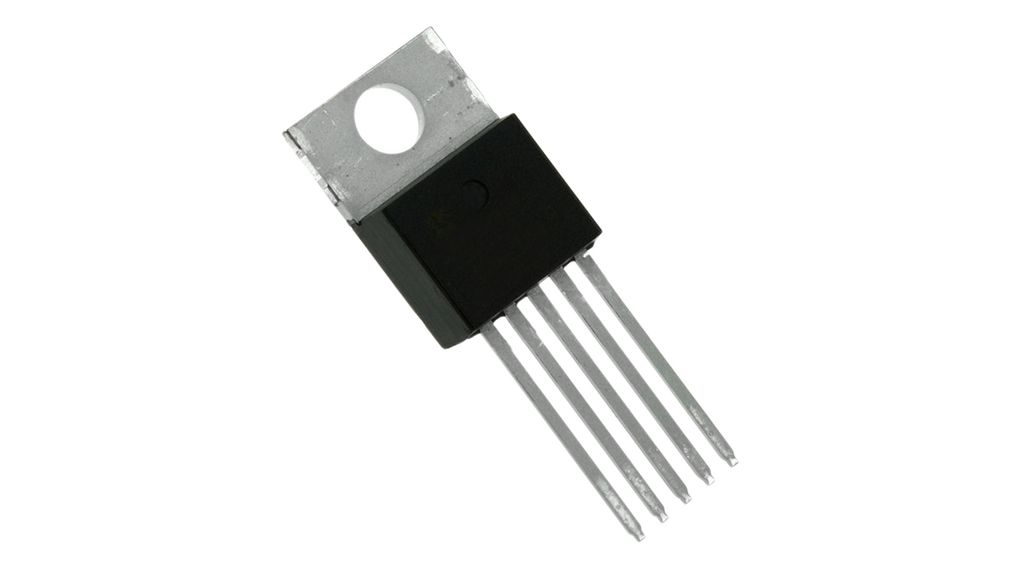
Overview of the LM2575 Series
The LM2575 series is a versatile voltage regulator designed for buck (step-down) switching applications, known for its high efficiency and ability to handle 1A loads with excellent line and load regulation. Operating at a frequency of 52KHz, thanks to its internal oscillator, the regulator simplifies circuit design by requiring only a few external components. The series includes different versions: the LM1575 for military use, the LM2575 for standard applications, and the LM2575HV for high-voltage needs. It offers fixed outputs of 3.3V, 5V, 12V, and 15V, as well as an adjustable version, available in DIP and TO-220 packages, with the military-grade version being an exception.
The LM2575 series demonstrates versatility, making it ideal for consumer electronics, automotive systems, and industrial equipment. Its ability to manage power with minimal additional components streamlines design, especially in space-constrained or cost-sensitive projects. Selecting the appropriate variant and output configuration can significantly enhance performance and compatibility, solving specific design challenges.
Replacements and equivalents:
• LM2675
• LM2677
• LM7912
• LM2596
• MP2307
LM2575 Manufacturer
National Semiconductor, founded in Santa Clara, established itself as a leader in analog power management with products like the LM2575. Their product lines, such as PowerWise and SolarMagic, catered to various industries including wireless, display, and automotive. In 2011, Texas Instruments acquired National Semiconductor for $6.5 billion, expanding its capabilities in power management and leveraging National’s expertise to drive innovation in analog technologies. The LM2575 found applications in sectors like automotive, improving fuel efficiency and vehicle performance, while in wireless communications, it helped extend battery life, meeting consumer expectations for durability. The merger with Texas Instruments marked a new era of innovation, focusing on trends such as energy efficiency and component miniaturization, ensuring the continued relevance of products like the LM2575. This strategic acquisition highlights how merging expertise can enhance technological development and accelerate advancements in power management solutions.
Key Features of LM2575
Low Power Consumption
The LM2575 is a highly efficient voltage regulator widely used in various applications due to its reliable performance. Its design minimizes power loss, with heat sinks being necessary primarily when managing large voltage differences.
Stability and Precision
With only a 0.5% output variance, the LM2575 offers excellent stability, crucial for precision-dependent applications. Internal filter capacitors help reduce output noise and ripple, enhancing the device's reliability and long-term performance.
Efficiency and Power Management
The LM2575 achieves over 90% efficiency through its PWM control mechanism, making it ideal for battery-powered and energy-conscious devices. This high efficiency extends the life of portable electronics, meeting the need for both durability and energy optimization.
Versatile Output and Protection Mechanisms
Equipped with an adjustable output and an input range of 4V to 40V, the LM2575 adapts to various voltage requirements, making it suitable for consumer electronics and industrial systems. It also includes protection against overheating and short circuits, ensuring operational safety and preventing damage.
Low Dropout Design
The LM2575's low dropout design further improves efficiency by reducing power loss even at low voltage inputs, making it essential for conserving energy in power-sensitive environments.
In summary, the LM2575 is a versatile voltage regulator that excels in energy efficiency, stability, and adaptability, maintaining its importance across different technological fields.
LM2575 Pin Configuration
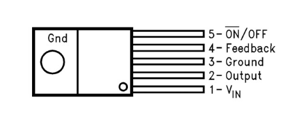
The LM2575 has five main pins, each playing a key role in its operation. Understanding how these pins work together can improve how well you use this regulator in your projects.
Input Voltage (Vin) and Its Role
The Vin pin receives the input voltage that hasn’t been regulated yet. It’s important to make sure this voltage stays within safe levels to prevent damage. A capacitor is often placed near this pin to keep the voltage stable and reduce noise, which helps make the regulator more reliable.
Output (OUT) and Load Stability
The OUT pin provides the regulated voltage to the load. Managing heat properly, such as using heat sinks, is important to avoid overheating, which can affect how well the regulator works.
Ground (GND) and System Stability
The GND pin connects the regulator to the system’s ground. A strong, stable connection at this pin is needed to reduce noise or problems that could disrupt the system. Good PCB design can help ensure a solid ground connection.
Feedback (FB) for Voltage Control
The FB pin helps maintain a steady output voltage by comparing it to a reference. Choosing the right resistors in the feedback network is important for ensuring stable voltage and reliable performance.
On/Off Control (ON’/OFF) for Power Efficiency
The ON’/OFF pin allows you to turn the regulator on or off without removing the input power. This is useful in situations where managing power efficiently can improve the overall performance and extend the system’s life. Using a control signal based on system needs can further improve power management.
Operational Overview of the LM2575
The LM2575 is a step-down switching regulator that reduces input voltage to a stable, lower output voltage. It works by using a semiconductor switch and an inductor to manage energy flow. When the switch is closed, the inductor stores energy, and when it opens, the inductor releases energy to maintain the output current, ensuring steady voltage.
The LM2575 also features a feedback loop that adjusts the switch’s duty cycle based on changes in load demand, helping keep the output voltage consistent. This makes it suitable for applications that require stable voltage. Fine-tuning this feedback loop through testing can further improve its performance.
When applying the LM2575, choosing the right components, like the inductor and switch, is important to optimize stability and thermal performance. Small changes in component values can affect how the regulator works, and testing different setups helps find the best configuration for the specific application.
Test Circuit and Layout Guidelines of LM2575

In any switching regulator, the layout plays an important role. Fast switching currents, combined with the wiring inductance, can create switching voltages that may cause issues. To reduce unwanted inductance and ground loops, the bolded lead lengths should be kept as short as possible. For the best performance, a single-point ground (as shown) or a ground plane should be used.
Uses of LM2575
Power Adapters
The LM2575 is well-suited for creating efficient power adapters, managing various input voltages to ensure devices receive the correct power. This flexibility makes it reliable for different charging and external power applications.
Communication Equipment
In communication equipment, the LM2575 provides stable power, which helps maintain signal quality and reduces interruptions. This is especially useful in environments that require continuous communication, such as telecommunication towers and network systems.
Medical Instruments
For medical devices, where precision and reliability are needed, the LM2575 supplies regulated power to diagnostic tools. This ensures accurate readings and stable performance, which helps healthcare professionals provide effective patient care without worrying about power issues.
LED Lighting
The LM2575 improves the efficiency and lifespan of LED lighting systems by stabilizing voltage levels. This helps maintain consistent light quality, making it suitable for both home and commercial lighting setups.
Automated Systems
In automation, the LM2575 ensures machinery runs smoothly by providing stable power. This is important in industrial settings, where maintaining productivity and efficiency relies on uninterrupted operation.
Automotive Electronics
The LM2575’s durability makes it a good fit for automotive electronics, as it can handle the tough conditions inside vehicles. It supports systems like infotainment and engine control, helping the vehicle operate smoothly.
Electronic Power Supplies
The LM2575 can be used in various electronic power supplies, adjusting to different power needs for devices ranging from household electronics to industrial equipment. Its ability to handle diverse power requirements makes it a valuable component for engineers designing reliable systems.
Voltage Regulator Dimensions and Package of LM2575
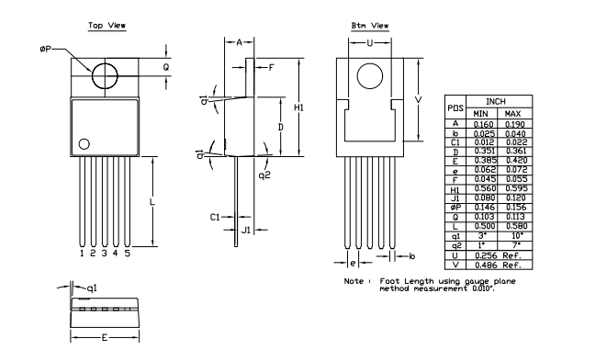
For the LM2575T-5.0 model, it comes in a TO-220 package. The package has a length of 10.54mm, a width of 4.57mm, and a height of 9.40mm.
Refined Design Approaches for LM2575
Diode Selection for Circuit Reliability
When designing circuits, it’s a good idea to choose a diode with a current rating that is at least 1.2 times higher than the expected maximum load. This helps ensure the circuit can handle potential short circuits, making the design more durable and reliable over time. Planning for unexpected surges adds to the circuit's long-term reliability.
Customizing Inductor Characteristics
Inductors should be carefully selected to match the design's output voltage and current needs. The right inductor affects the efficiency and stability of the LM2575. If the inductor is too small, the circuit may become inefficient, while a large inductor could increase the overall size and cost of the design.
Strategic Input Capacitor Placement
Input capacitors should be at least 47uF and placed as close to the circuit as possible. This helps reduce Equivalent Series Resistance (ESR) and improves overall performance. Positioning the capacitors nearby minimizes noise and stabilizes the input voltage, as seen in designs where noise reduction is important for achieving precision.
Selecting Ideal Output Capacitors
For output capacitors, choose values between 100uF and 470uF with the ability to handle 1.5 to 2 times the rated output voltage. This extra capacity helps manage voltage fluctuations, leading to safer operation and improved stability. These factors are especially useful in applications where precise control and stable performance are needed.
Frequently Asked Questions [FAQ]
1. How Does the LM2575T Enhance Circuit Design?
The LM2575T-5G plays a helpful role in creating efficient step-down converters with only a few external components. It is effective at converting higher input voltages into stable lower outputs, improving power management in electronic circuits. Understanding its thermal behavior and how it handles different loads can improve its application across various devices.
2. What Are the Variants of Voltage Regulators?
Voltage regulators can be categorized as step-up (boost), which increases voltage; step-down (buck), which decreases voltage; and inverters, which convert DC to AC. When building prototypes, choosing the right type of regulator depends on specific power needs, making it necessary to understand load conditions and efficiency requirements.
3. Can the LM2575 Be Adjusted?
The LM2575 typically comes in fixed voltage versions, making it suitable for projects that require a constant output. However, for more flexible applications that need adjustable voltage, the LM2576 offers the option of variable output. Achieving the desired results often involves fine-tuning these regulators.
4. What Highlights an Adjustable Voltage Regulator?
Adjustable voltage regulators allow for DC output over a range of voltages, which is useful in projects that need variable voltage control. This flexibility is valuable in many applications. Understanding how input changes affect output stability is important to using these regulators effectively.
About us
ALLELCO LIMITED
Read more
Quick inquiry
Please send an inquiry, we will respond immediately.

A Complete Guide to the CD4046BE and Its Applications
on September 27th
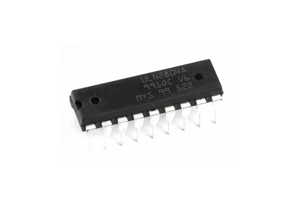
Understanding ULN2804A: Equivalent Arrays, Symbol, and Functional Overview
on September 26th
Popular Posts
-

What is GND in the circuit?
on January 1th 3145
-

RJ-45 Connector Guide: RJ-45 Connector Color Codes, Wiring Schemes, R-J45 Applications, RJ-45 Datasheets
on January 1th 2697
-

Understanding Power Supply Voltages in Electronics VCC, VDD, VEE, VSS, and GND
on November 15th 2276
-

Fiber Connector Types: SC Vs LC And LC Vs MTP
on January 1th 2195
-

Comparison Between DB9 and RS232
on January 1th 1812
-

What Is An LR44 Battery?
Electricity, that ubiquitous force, quietly permeates every aspect of our daily lives, from trivial gadgets to life-threatening medical equipment, it plays a silent role. However, truly grasping this energy, especially how to store and efficiently output it, is no easy task. It is against this background that this article will focus on a type of coin cell battery that may seem insignificant on the...on January 1th 1783
-

Understanding the Fundamentals:Inductance Resistance, andCapacitance
In the intricate dance of electrical engineering, a trio of fundamental elements takes center stage: inductance, resistance, and capacitance. Each bears unique traits that dictate the dynamic rhythms of electronic circuits. Here, we embark on a journey to decipher the complexities of these components, to uncover their distinct roles and practical uses within the vast electrical orchestra. Inductan...on January 1th 1735
-

CR2430 Battery Comprehensive Guide: Specifications, Applications and Comparison to CR2032 Batteries
What is CR2430 battery ?Benefits of CR2430 BatteriesNormCR2430 Battery ApplicationsCR2430 EquivalentCR2430 VS CR2032Battery CR2430 SizeWhat to look for when buying the CR2430 and equivalentsData Sheet PDFFrequently Asked Questions Batteries are the heart of small electronic devices. Among the many types available, coin cells play a crucial role, commonly found in calculators, remote controls, and ...on January 1th 1692
-

What Is RF and Why Do We Use It?
Radio Frequency (RF) technology is a key part of modern wireless communication, enabling data transmission over long distances without physical connections. This article delves into the basics of RF, explaining how electromagnetic radiation (EMR) makes RF communication possible. We will explore the principles of EMR, the creation and control of RF signals, and their wide-ranging uses. The article ...on January 1th 1690
-

Comprehensive guide to hFE in transistors
Transistors are crucial components in modern electronic devices, enabling signal amplification and control. This article delves into the knowledge surrounding hFE, including how to select a transistor's hFE value, how to find hFE, and the gain of different types of transistors. Through our exploration of hFE, we gain a deeper understanding of how transistors work and their role in electronic circu...on November 15th 1657





